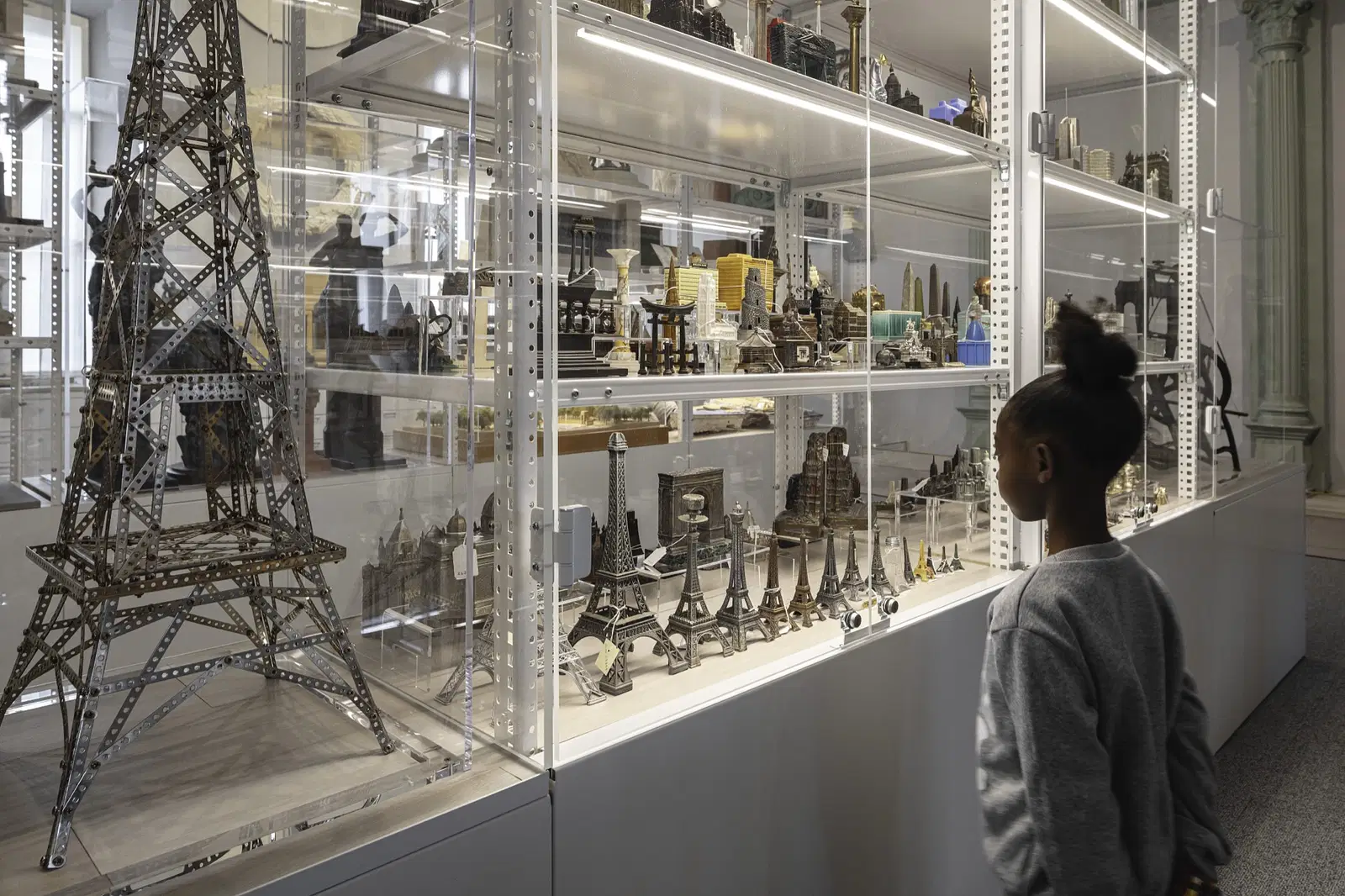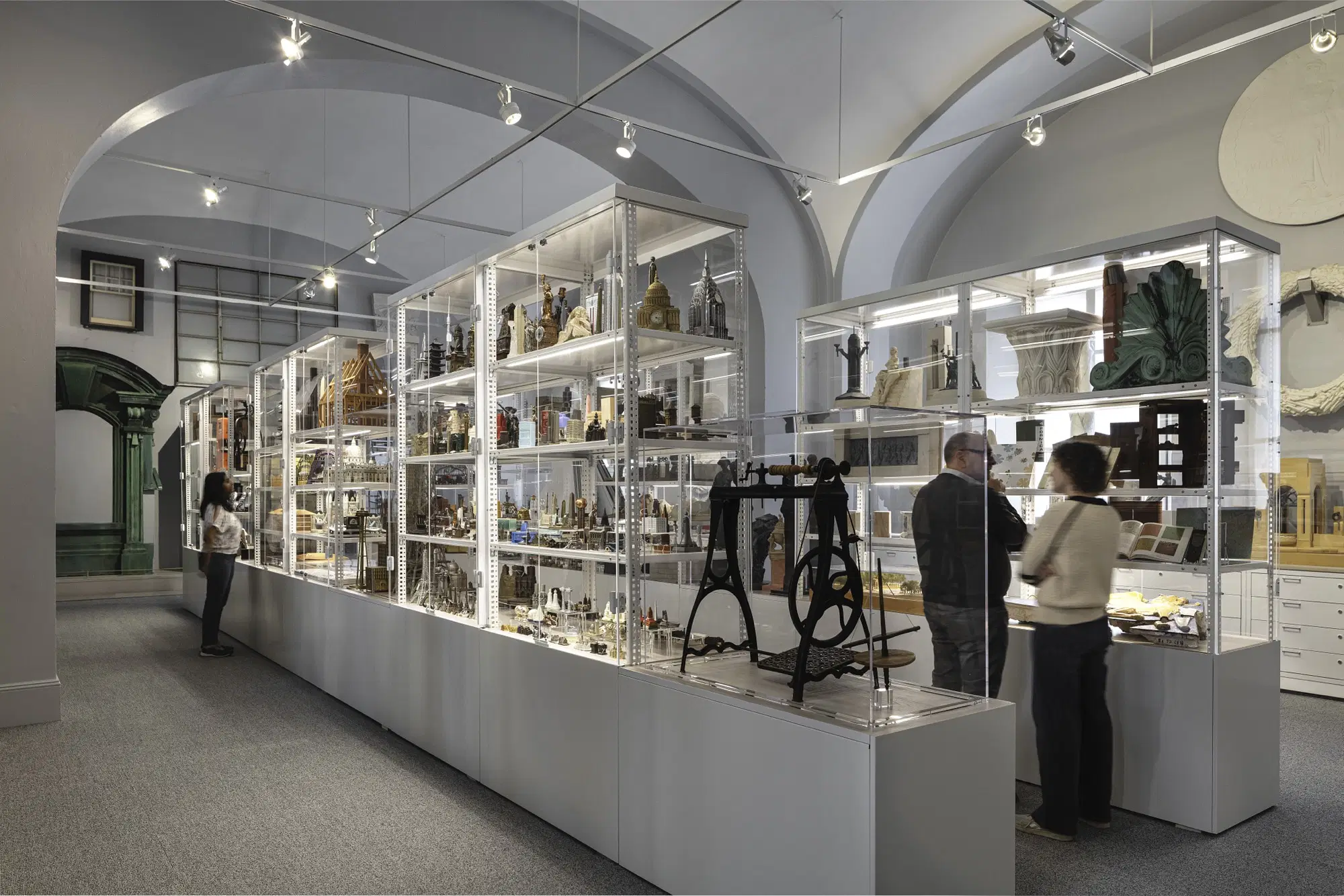The National Building Museum’s new exhibit, “Visible Vault,” presents an eclectic mix of artifacts that highlight the history of architecture and construction. This permanent installation showcases 2,500 objects from the museum’s vast collection of over 500,000 items. Visitors will find architectural models, vintage tools, historic building materials, and even toys related to construction.
Notable pieces include a panel from an early skyscraper’s elevator, a section of a demolished department store’s cast-iron facade, and an early version of an Erector Set. The exhibit feels like a carefully curated antique shop, where each object holds a unique story.
Enhancing Public Access
Historically, much of the museum’s collection remained behind closed doors, accessible only through special requests. “Visible Vault” changes this by making a significant portion of the artifacts available for public viewing. Each item is accompanied by a QR code that provides additional historical context. The museum is also in the process of digitizing its collection, allowing people to explore it online. Furthermore, new objects will be periodically rotated into the exhibit, ensuring a fresh and evolving experience for visitors.

Choosing the 2,500 artifacts for the exhibit was a meticulous process. According to Nancy Bateman, the museum’s senior registrar and director of collections, the goal was to represent the full breadth of the museum’s holdings. Every category of artifact is featured in some form, from intricate architectural drawings to everyday materials used in construction. This variety offers insight into the evolution of building techniques and how design has influenced daily life over the years.
Displaying Hazardous Artifacts
One of the exhibit’s more unexpected elements is the inclusion of materials that are now considered hazardous, such as lead paint and asbestos tiles. While curators were initially hesitant to display these items, they ultimately decided it was important to tell the story of how building materials have evolved for safety. The exhibit presents these objects in a way that educates visitors about past mistakes in construction and how industries have worked to improve material safety over time.
Beyond curating and displaying the artifacts, the museum had to address an unexpected challenge—the weight of the exhibit itself. The combined mass of the artifacts and display cases raised concerns about whether the floors of the museum’s 19th-century building could support them. Engineers reinforced the structure with additional support beams, ensuring the exhibit’s safety.
Despite this logistical hurdle, Bateman saw the experience as a learning opportunity, aligning perfectly with the museum’s mission to educate the public about architecture and construction. “Visible Vault” is more than just a collection of objects; it is an interactive and evolving space that brings architectural history to life.
